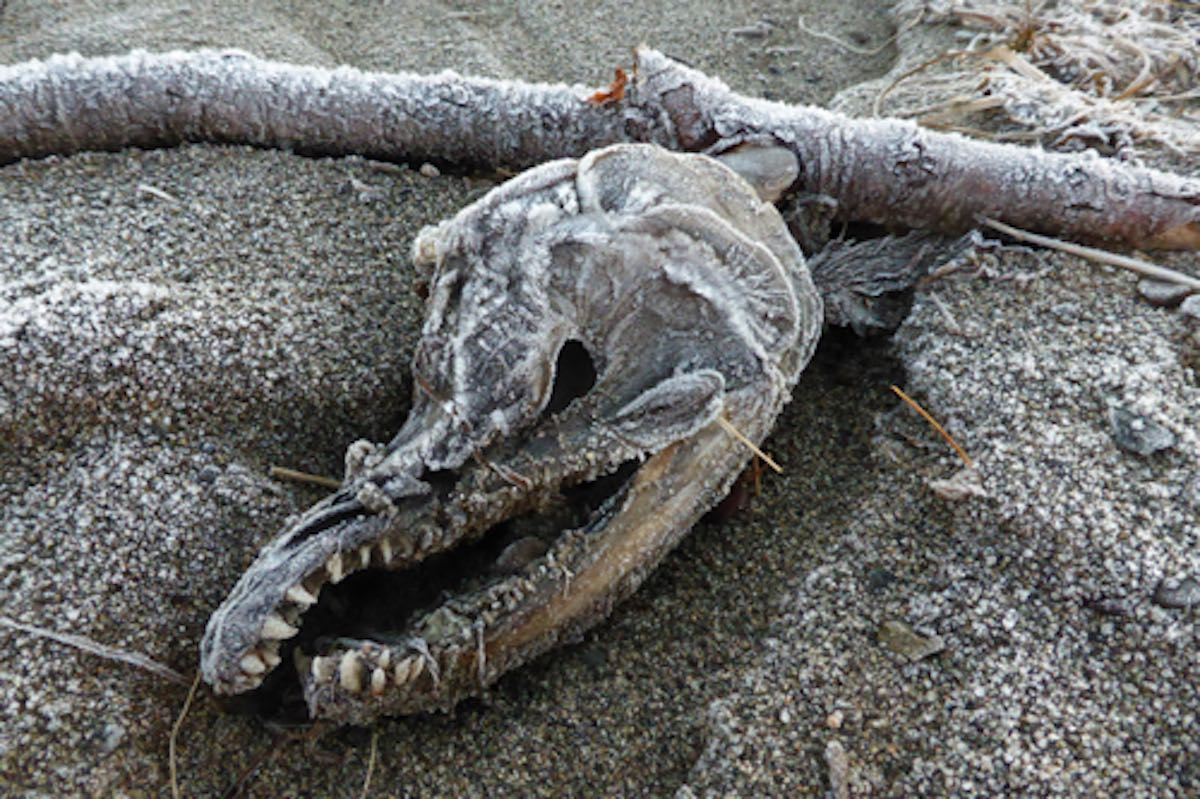
A salmon carcass head along a beach within Katmai National Park.
The fragrance of fall is in the air at Brooks Camp, as well as the powerful scent of dead and decaying fish. Each year, over one million sockeye salmon return from the Pacific Ocean to the Naknek River, approximately twenty percent of which continue their upstream migration into the Brooks River. They have returned to their natal spawning grounds to lay and fertilize millions of fragile eggs that will hopefully survive the next several perilous months to hatch sometime after the New Year.
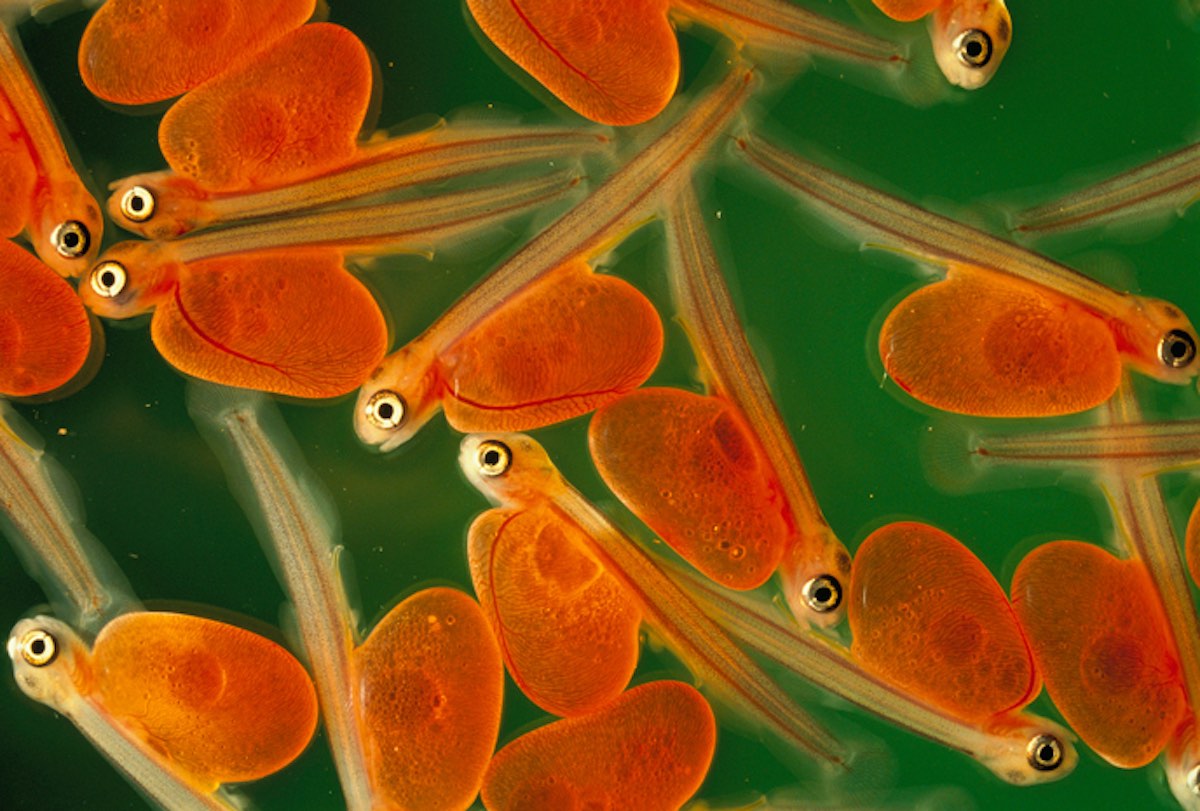
Sockeye salmon alevin during a stage that lasts several weeks.
Their journey home is an arduous one, wrought with a gauntlet of threats that stake claim to the lives of many. Natural predators, commercial catch, pollution and sport fishing all play a role in the survival of these salmon. Many arrive at the Brooks River exhibiting scars of the battles they have fought: enormous bite marks out of the dorsal hump that develops on males during spawning season, flesh wounds around the neck from a gill net escapee resembling a lacy scarf; white, fungus-encrusted mummy fish made vulnerable from open wounds and of course, Cyclops salmon, snagged in the eye by a famished fisherman.
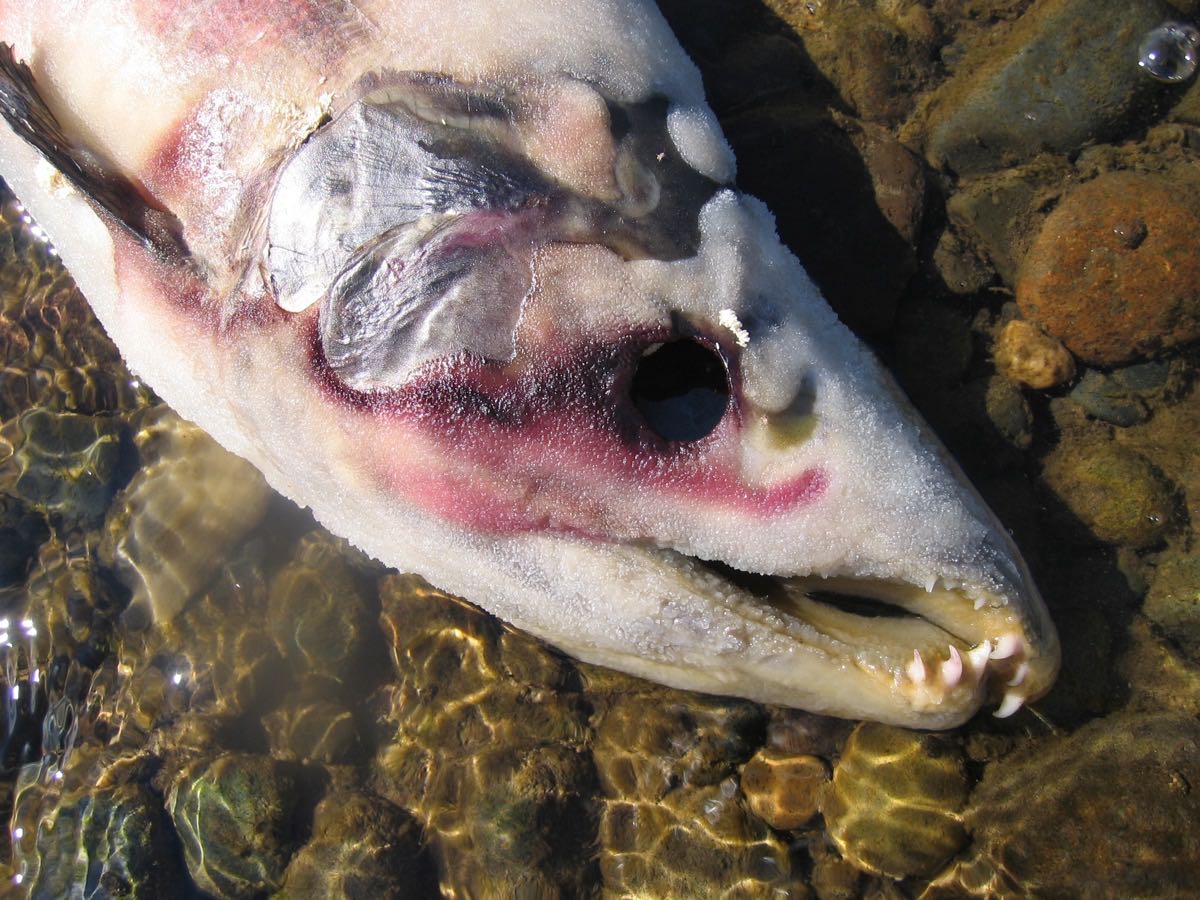
A sockeye salmon displaying the effects of fungal infection.
Salmon begin fasting when they re-enter fresh water, surviving off of the stored energy they acquired during their rapid growth at sea. They transform from hues of blue and silver to riotous red the closer to their death they get, and like rolling out the red carpet, they assemble at their natal spawning ground only to be snatched up by the hungry brown bears awaiting their arrival. Approximately one in one-thousand eggs will survive to be able to return to their natal river, and when they do fulfill their purpose of procreation there is no paparazzi there to capture the moment, no swooning star struck fans, just a watery grave for them to slowly starve to death in, an ecological sacrifice critical to Katmai.
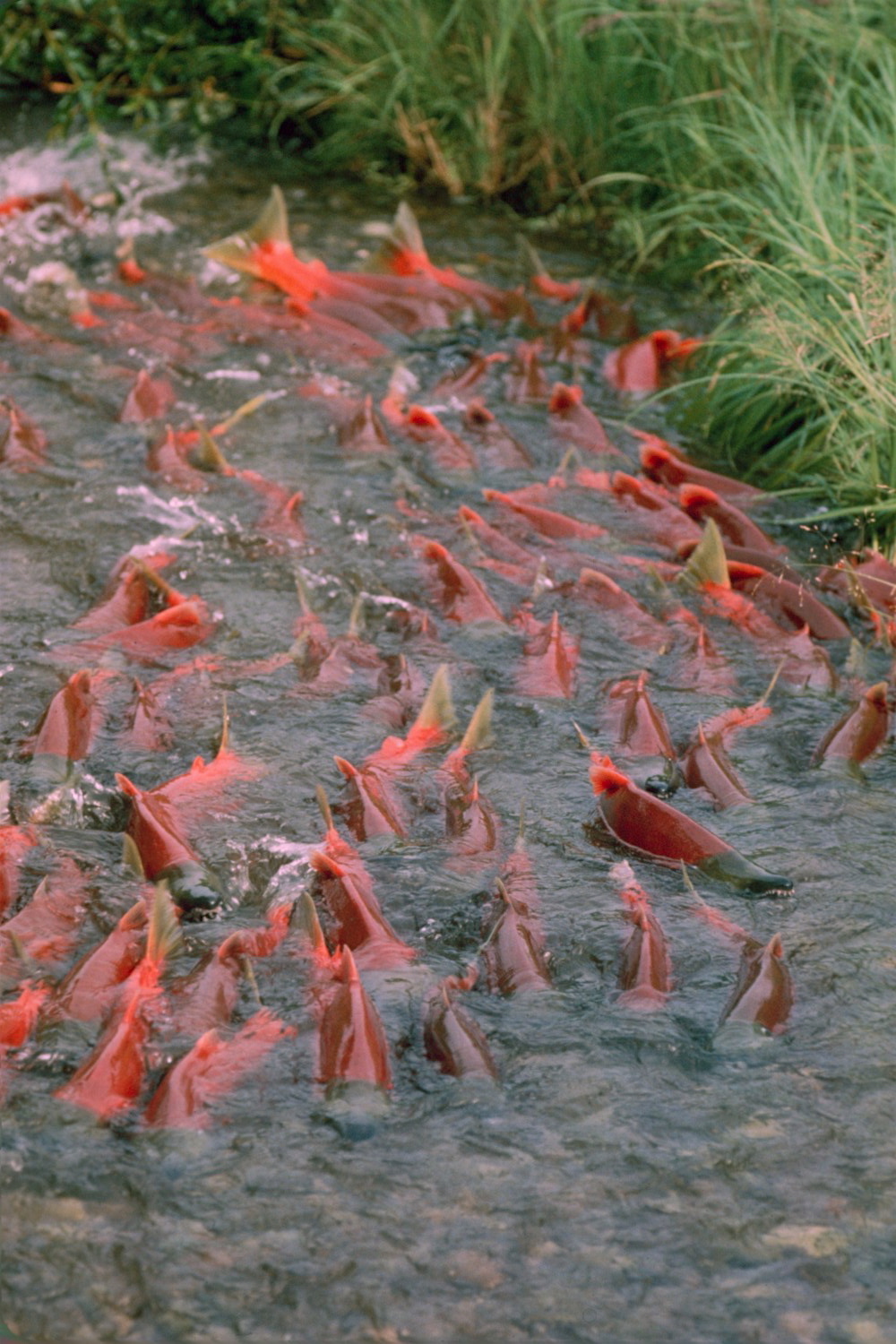
Sockeye salmon are thick within the small streams of Katmai.
Sockeye salmon are the heartbeat of Katmai National Park and Preserve, a keystone species of this delicately balanced ecosystem. Animals and plants alike significantly benefit from the rich nutrients these resilient and tenacious fish bring back from the ocean to these freshwaters of the park. Like our blood delivering oxygen throughout our bodies, the salmon carry nitrogen and phosphorous to nutrient-poor lakes like Naknek and Brooks, encouraging the growth of zooplankton, an essential food source for juvenile salmon, trout and char. These same nutrients are carried into the trees and plants adjacent to the spawning grounds by the brown bears of Katmai when they retreat to the forest to feed or leave nutrient-rich piles of excrement behind. Without the sockeye salmon, the show won’t go on. The part they play supports the role of most organisms within the park and without them, the cast of Katmai characters will become incomplete.
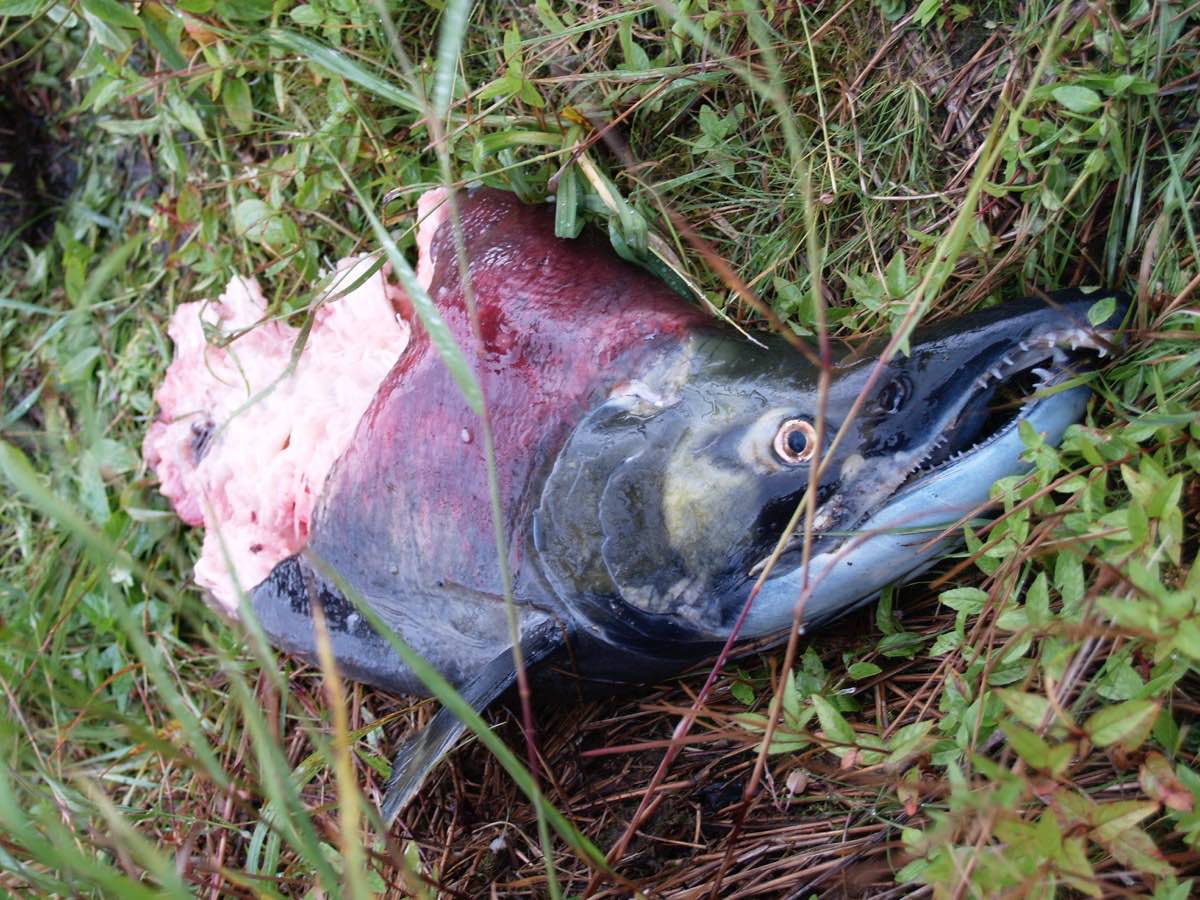
Sockeye salmon carcasses transfer nutrients as they decay.
Yes, brown bears are the stars of the stage here at Brooks Camp, but the sockeye salmon are the ones truly deserving of a standing ovation. They defy gravity, cheat death and defend their lineage until the final scene, hopefully to be remembered by more than just their scent of sacrifice.
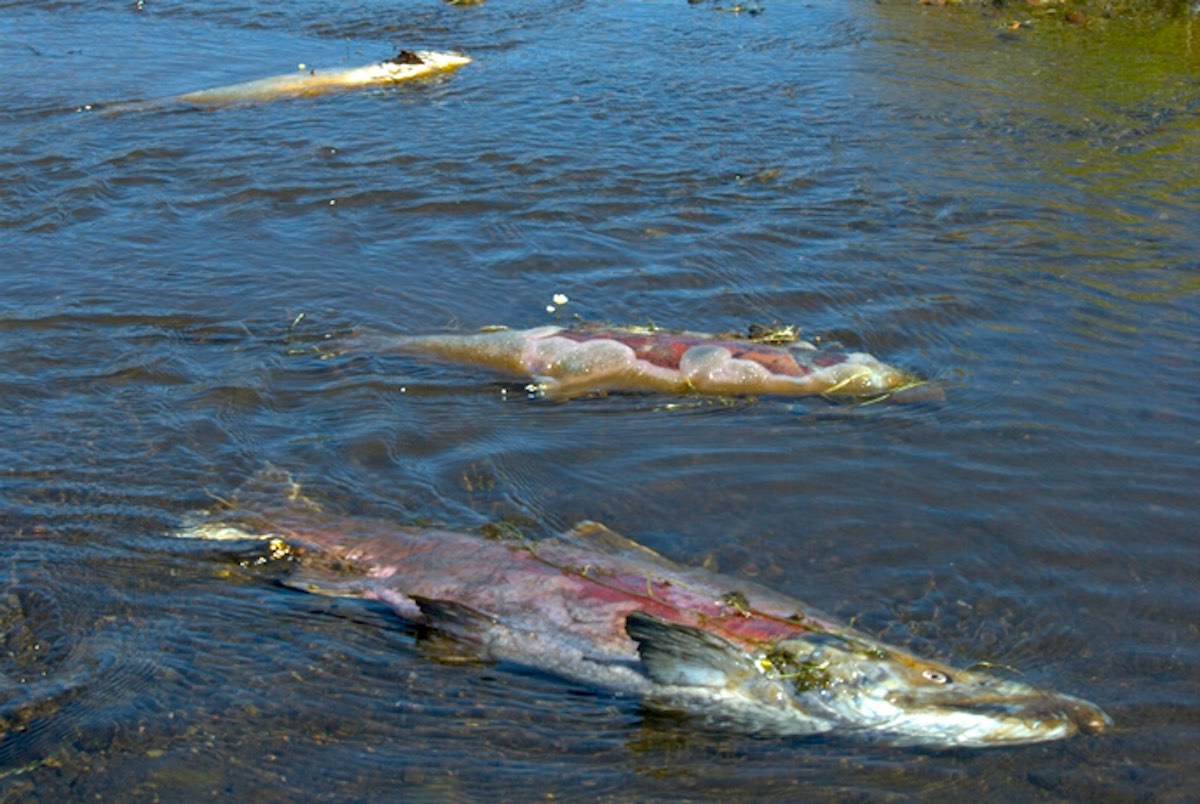
Sockeye salmon carcasses litter the shores of spawning grounds.
